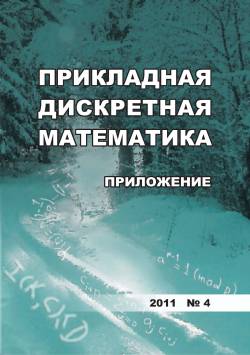NFS factorization: new hopes
We describe new Number Field Sieve techniques. While none is proved (even under heuristics) to work for a concrete family of number fields, we hope such a family exist. If this is the case, we can factor a special integer n in time Ln(1/3, (16/9)1/3), which doubles the length of n with respect to SNFS for the same time. This algorithm works by finding a strongly-ambiguous ideal in order to factor the relative discriminant of a prime degree Galois extension. In case this method can be adapted for factoring general numbers, it may reach a complexity Ln(1/3, (32/9)1/3). A variant of the same technique for computing number fields of constant degree d would allow multiplying by d the length of the discriminant at the same complexity. We emphasize that for these running times to hold, we need to build highly specific number fields, and there is no evidence it can be done. Finally, we give another technique for finding the maximum order of number fields, and may run as fast as £|д|(1/3, (16/9)i/3). This method is likely to work, and can therefore find some square factors in some numbers.
Keywords
number field sieve,
integer factorization,
решето числового поля,
факторизация целых чиселAuthors
| Kirchner P. | French Institute for Research in Computer Science and Automation | pkirchne@clipper.ens.fr |
Всего: 1
References
Kluners J. and Pauli S. Computing residue class rings and Picard groups of orders. J. Algebra, 2005, vol. 292, no. 1, pp. 47-64.
Buchmann J. A. and Lenstra H. W. Approximating rings of integers in number fields. J. de theorie des nombres de Bordeaux, 1994, vol. 6, no. 2, pp. 221-260.
Cox D.A. Primes of the Form x2 + ny2: Fermat, Class Field Theory, and Complex Multiplication. John Wiley & Sons, 2011, vol.34.
Adleman L. M. Factoring numbers using singular integers. Proc. 23th Ann. ACM Symp. Theory of Computing, ACM, 1991, pp. 64-71.
Pollard J. M. Theorems on factorization and primality testing. Math. Proc. of the Cambridge Philosophical Soc., Cambridge Univ. Press, 1974, vol.76, no.3, pp. 521-528.
Williams H. C. A p + 1 method of factoring. Math. Computation, 1982, vol.39, no. 159, pp. 225-234.
Bach E. and Shallit J. Factoring with cyclotomic polynomials. Math. Computation, 1989, vol. 52, no. 185, pp. 201-219.
Kirchner P. Algorithms on Ideal over Complex Multiplication Order. arXiv preprint arXiv:1602.09037, 2016.
Schoof R. Computing Arakelov class groups. arXiv preprint arXiv:0801.3835, 2008.
Coppersmith D. Modifications to the number field sieve. J. Cryptology, 1993, vol.6, no.3, pp. 169-180.
Seysen M. A probabilistic factorization algorithm with quadratic forms of negative discriminant. Mathematics of Computation, 1987, vol.48, no. 178, pp. 757-780.
Lenstra H. W. and Pomerance C. A rigorous time bound for factoring integers. J. Amer. Math. Soc., 1992, vol.5, no. 3, pp. 483-516.
Cohen H. A Course in Computational Algebraic Number Theory. Springer Science & Business Media, 2013.
Lemmermeyer F. The Ambiguous Class Number Formula Revisited. arXiv preprint arXiv:1309.1071,2013.
Buhler J. P., Lenstra H. W., and Pomerance C. Factoring integers with the number field sieve. The Development of the Number Field Sieve, Springer, 1993, pp. 50-94.
